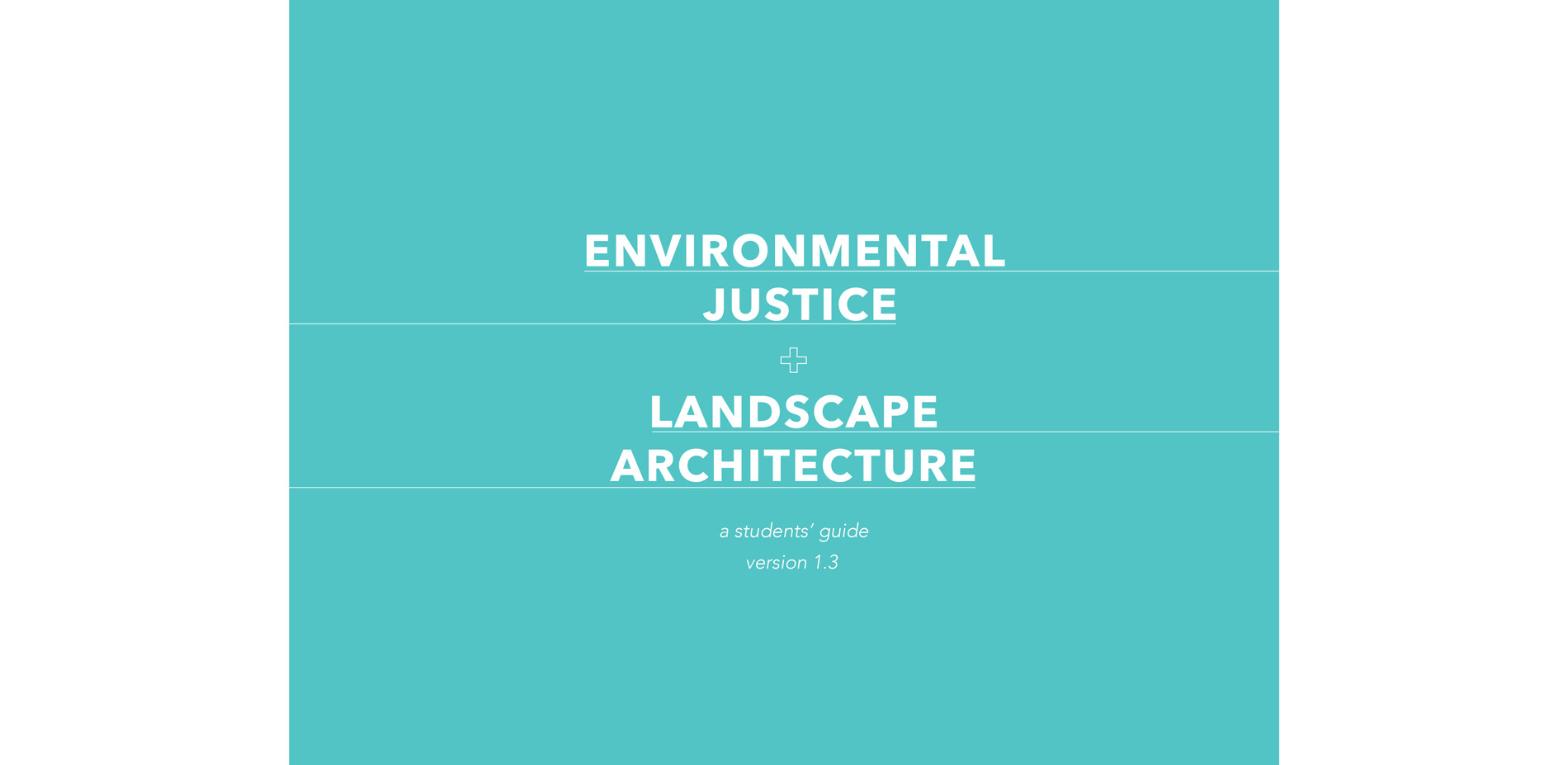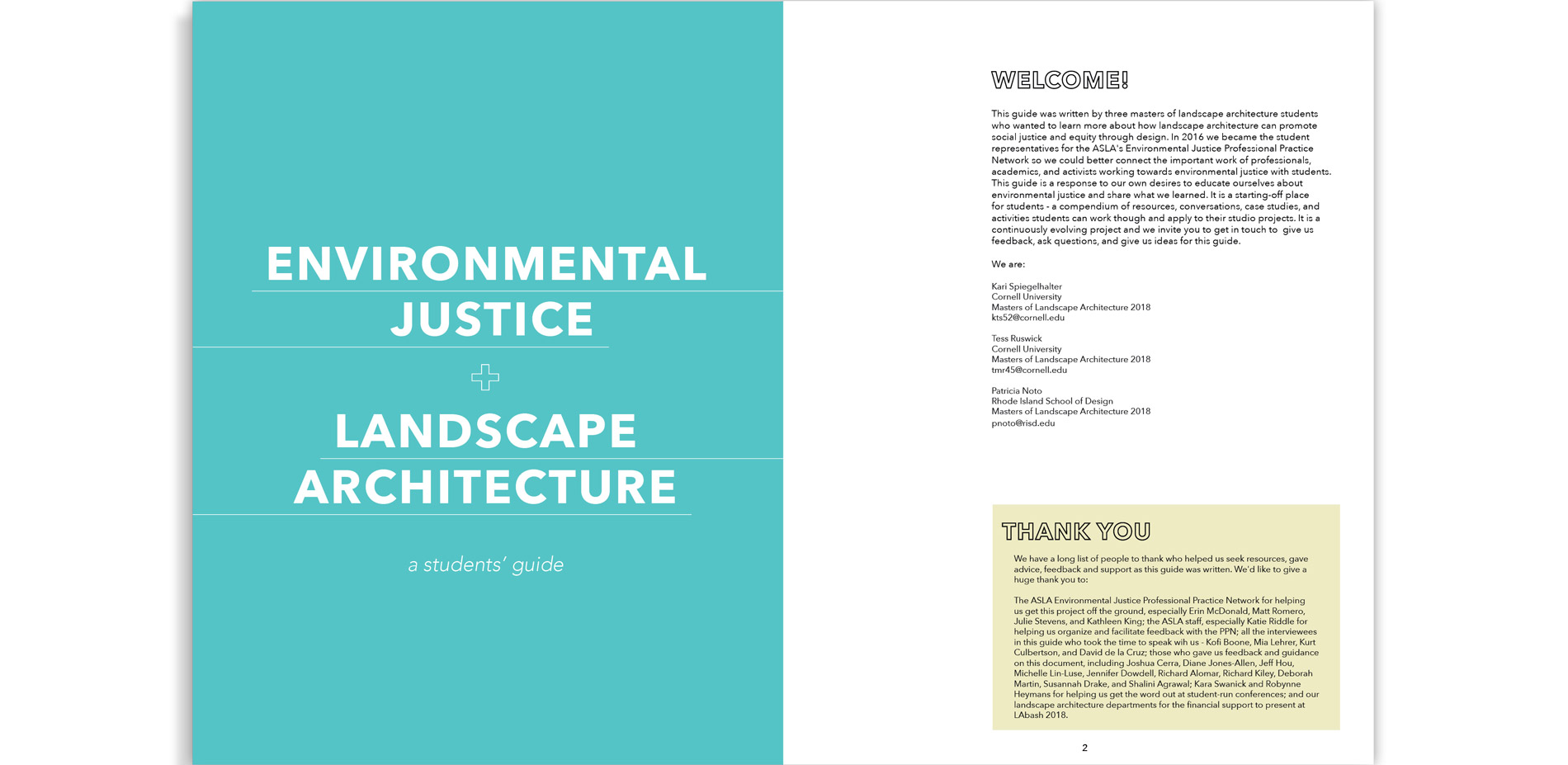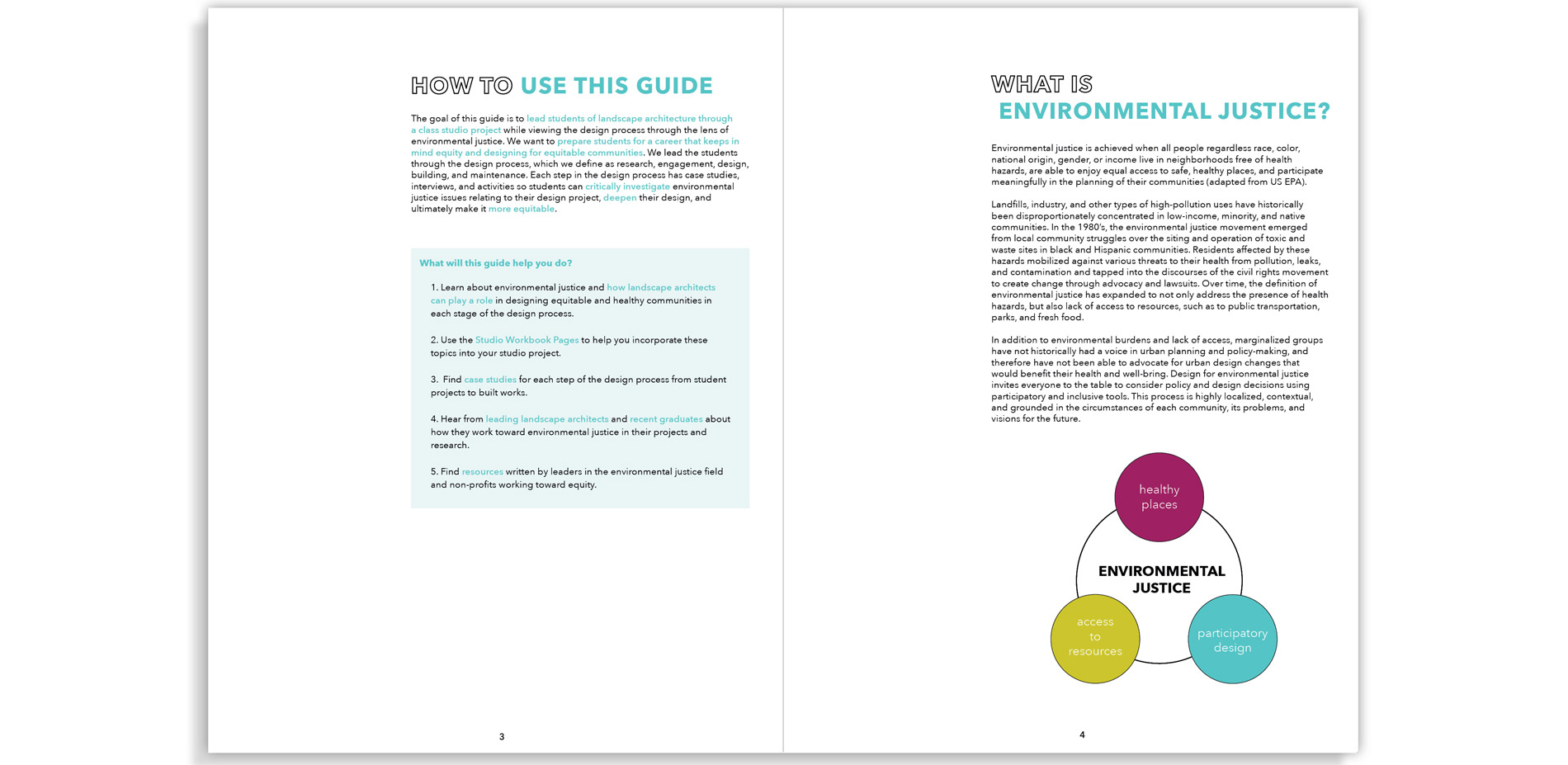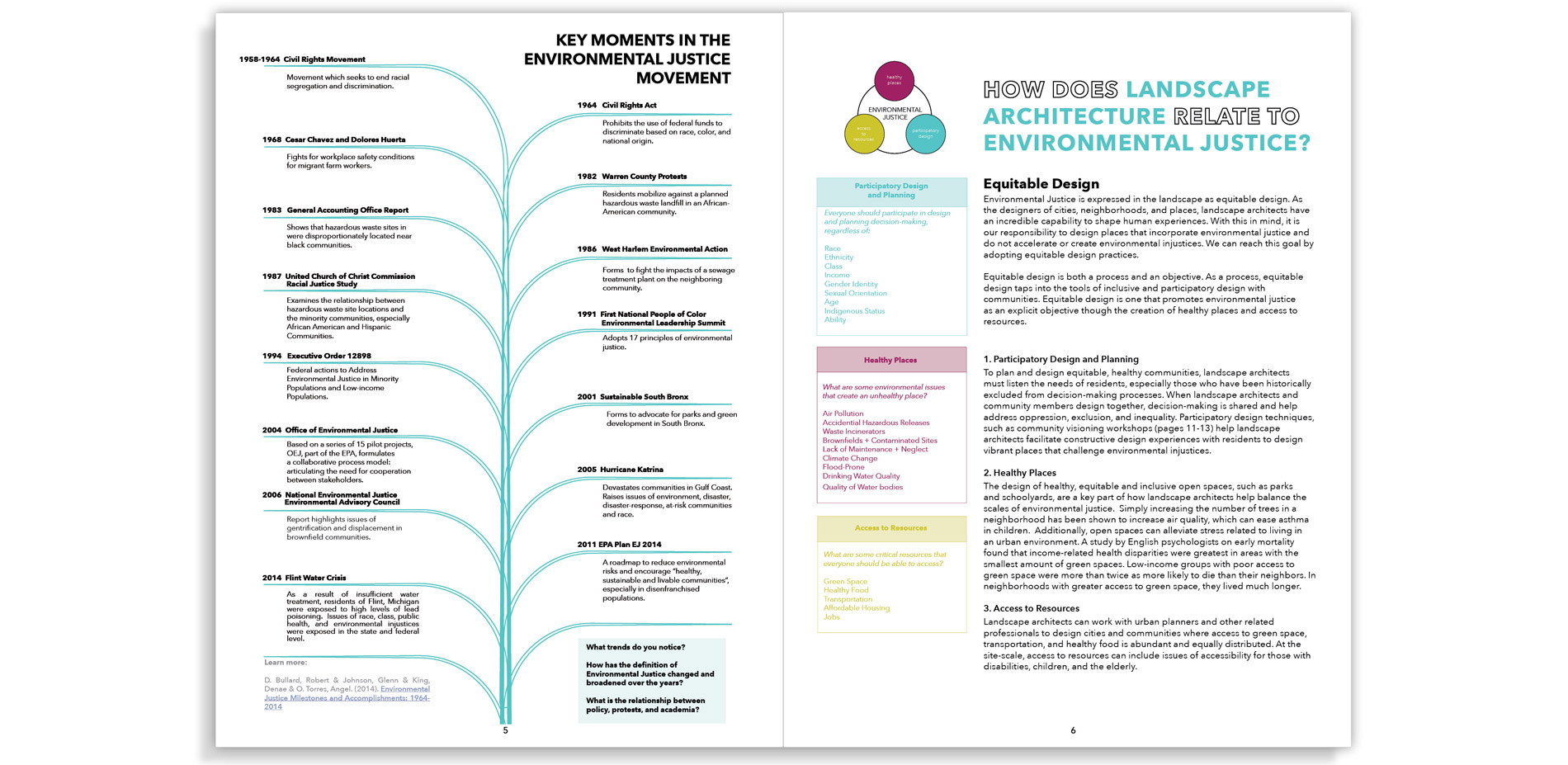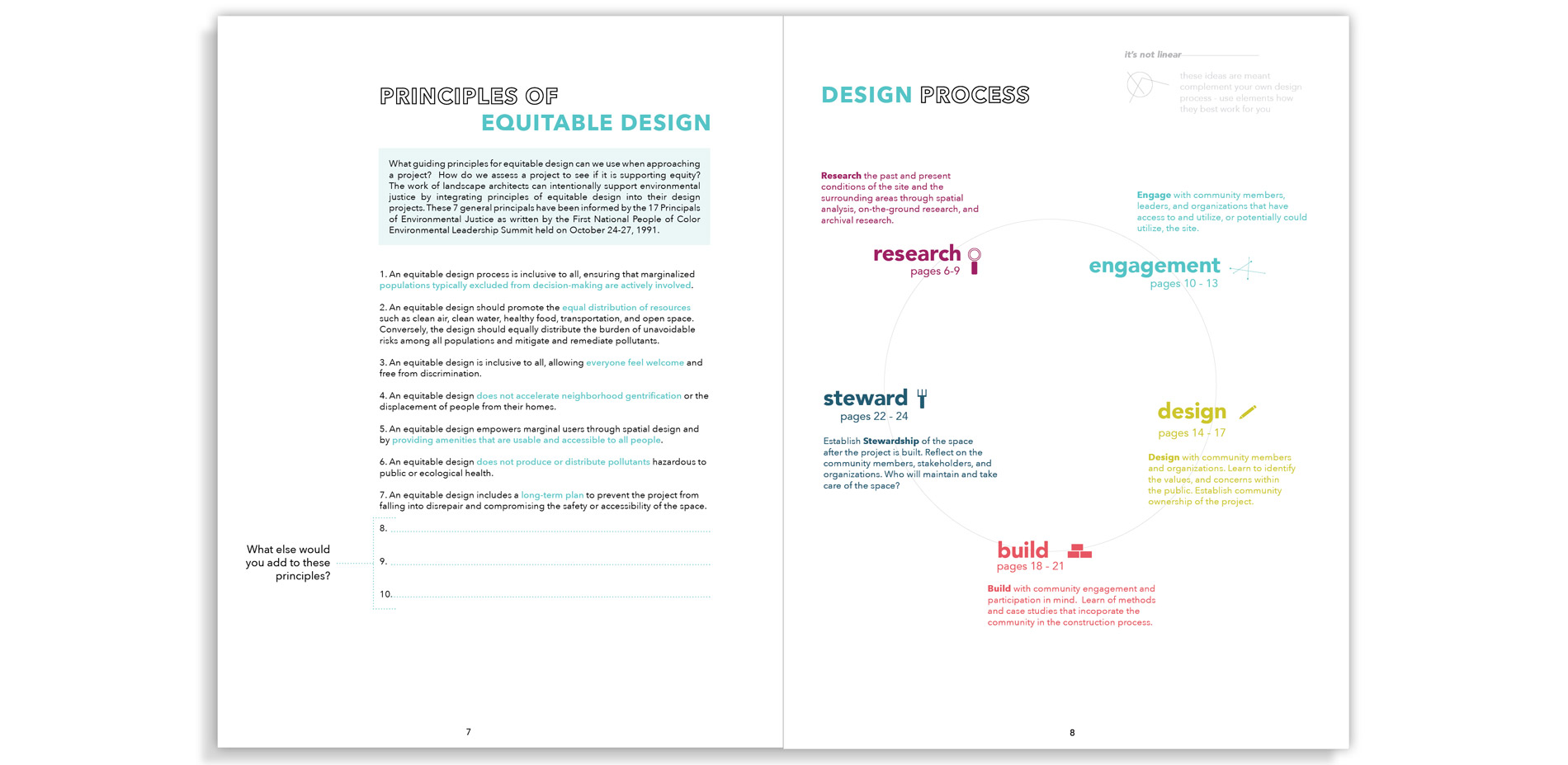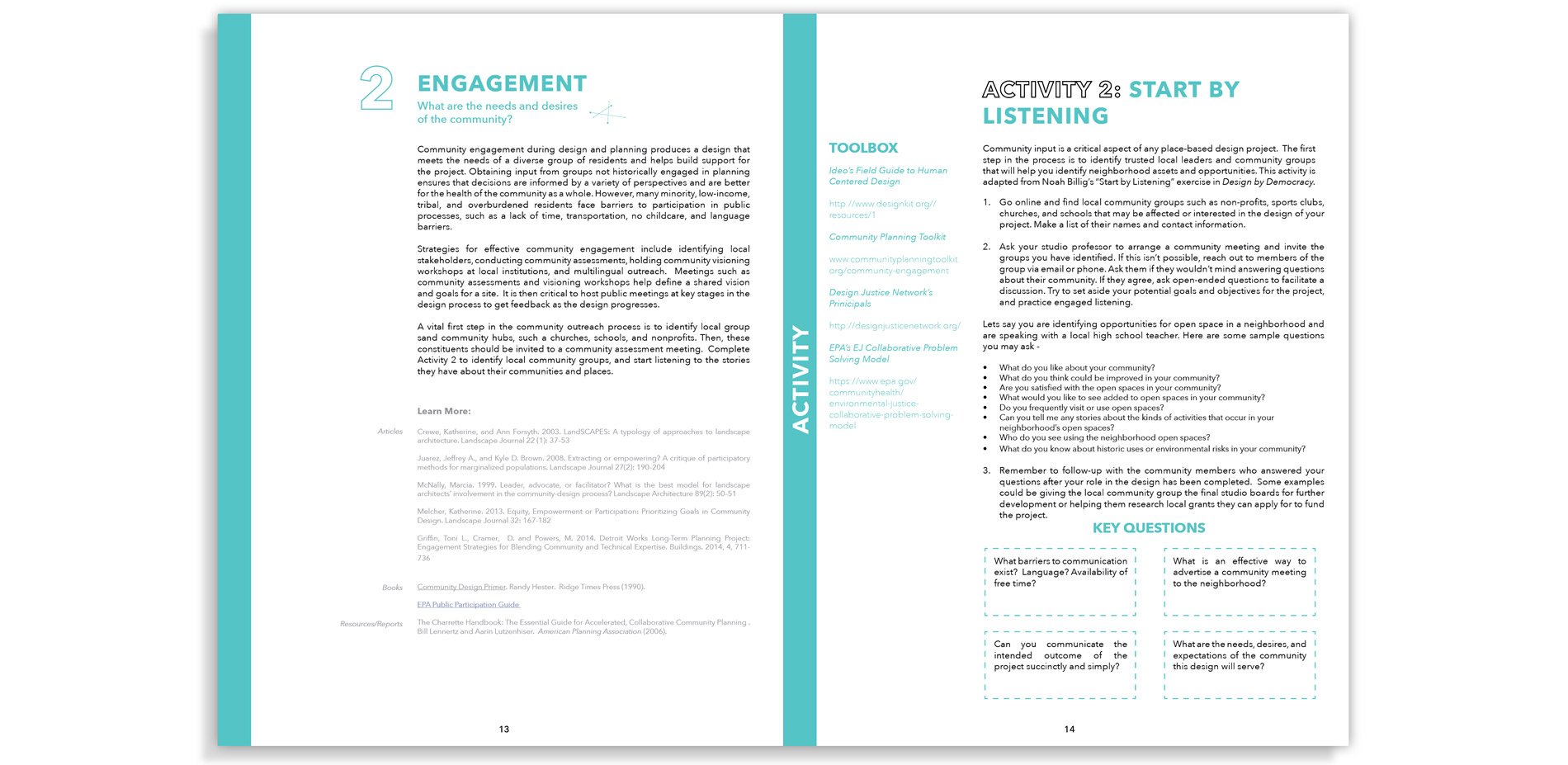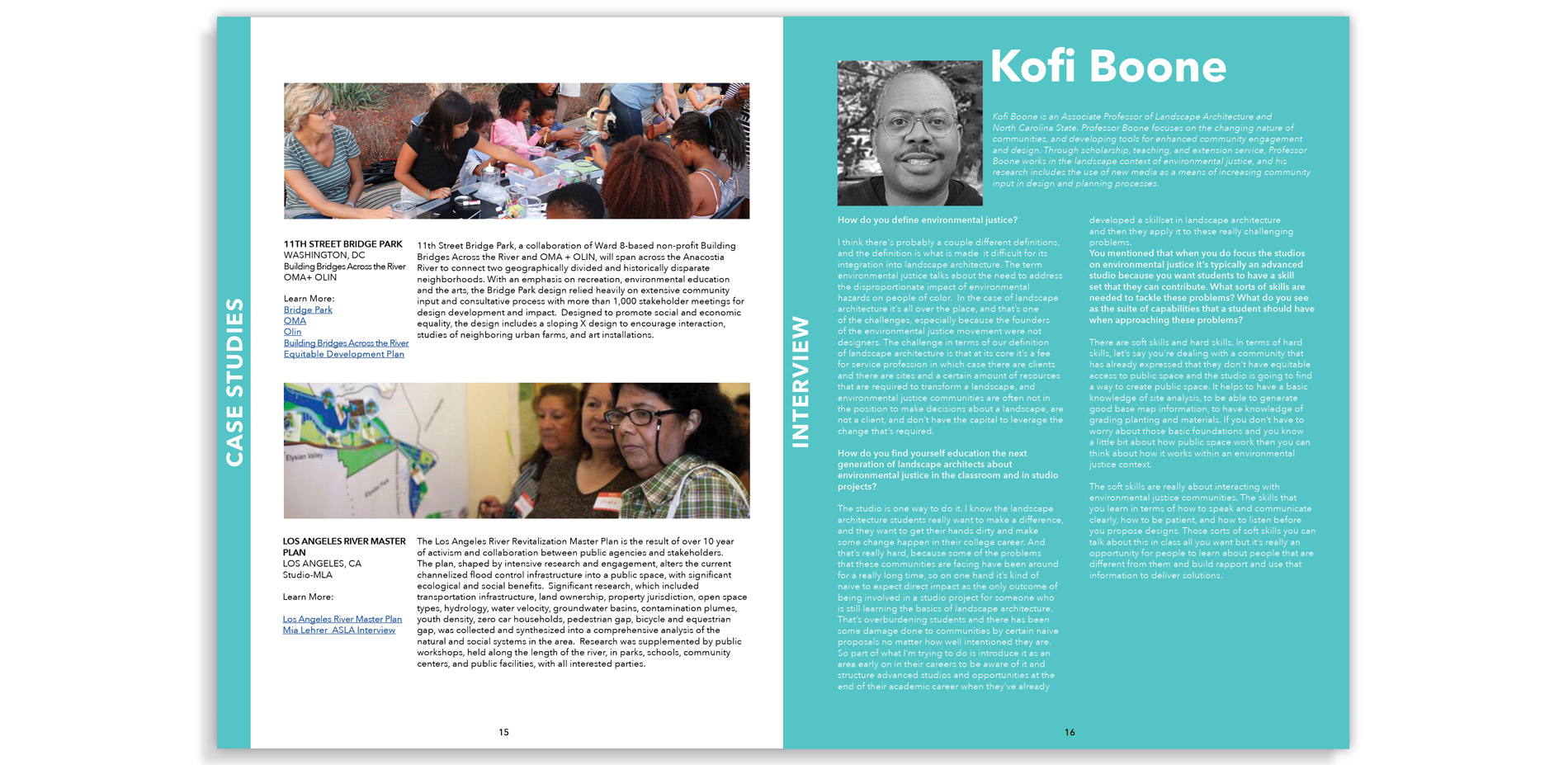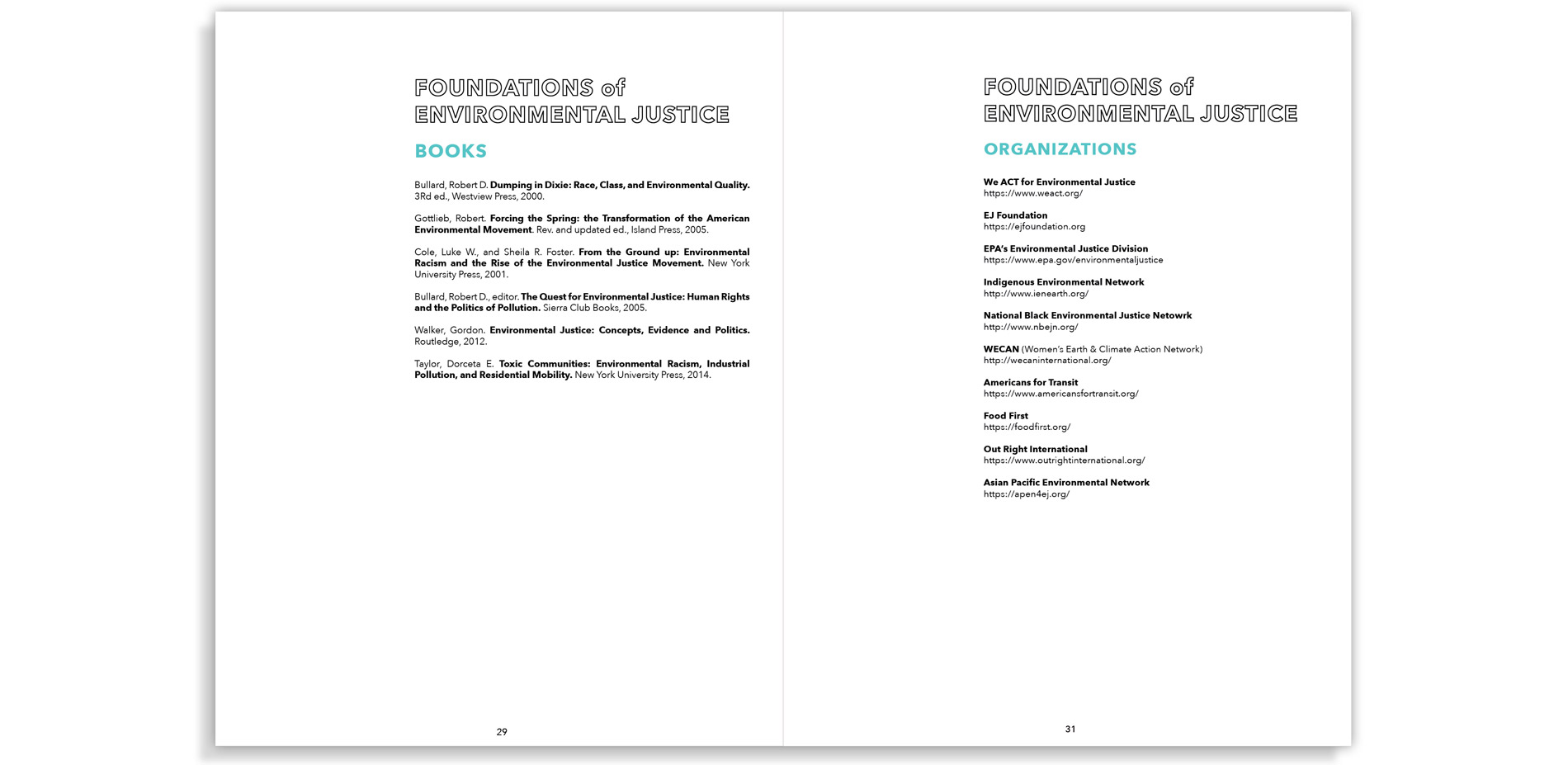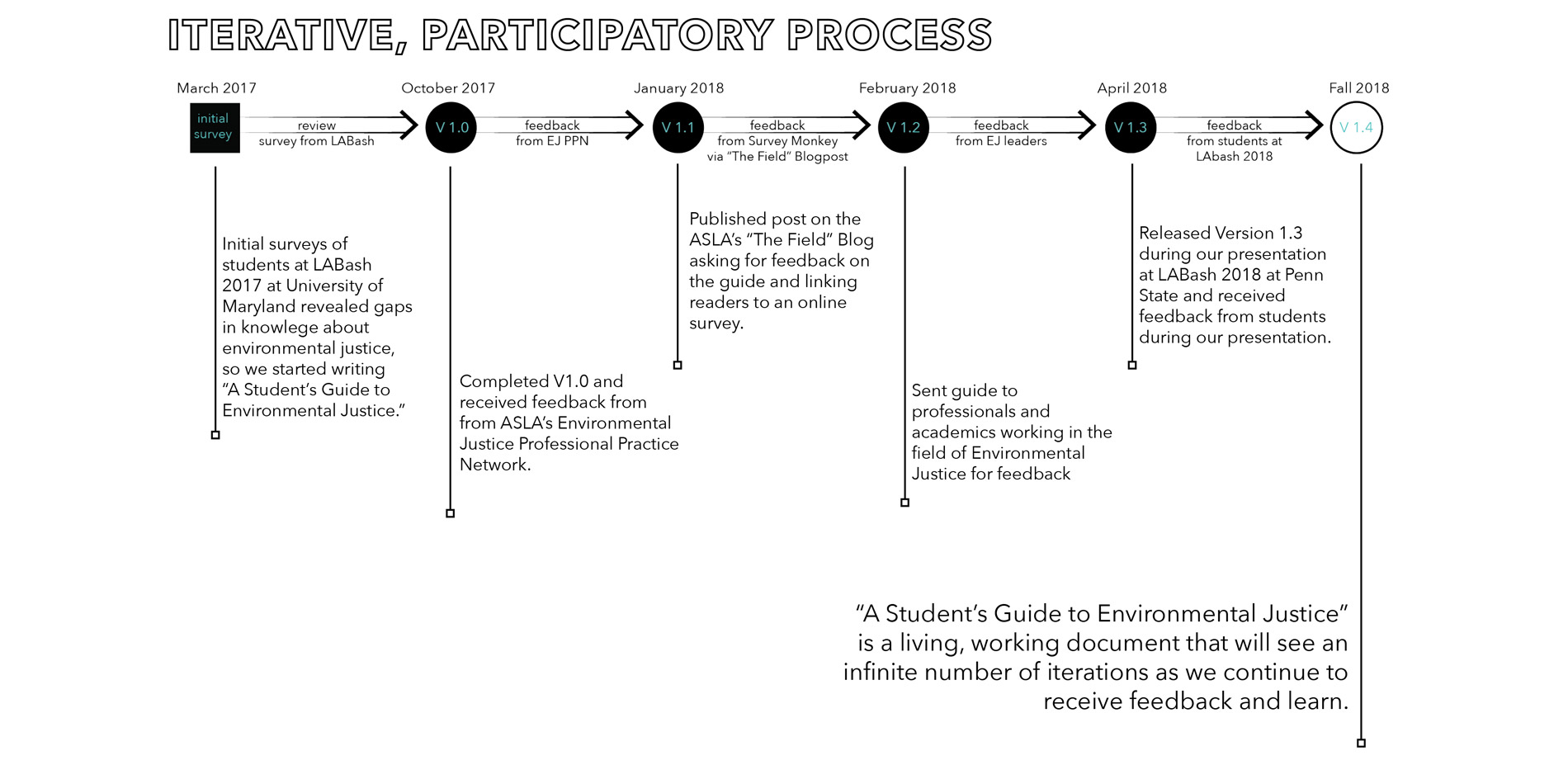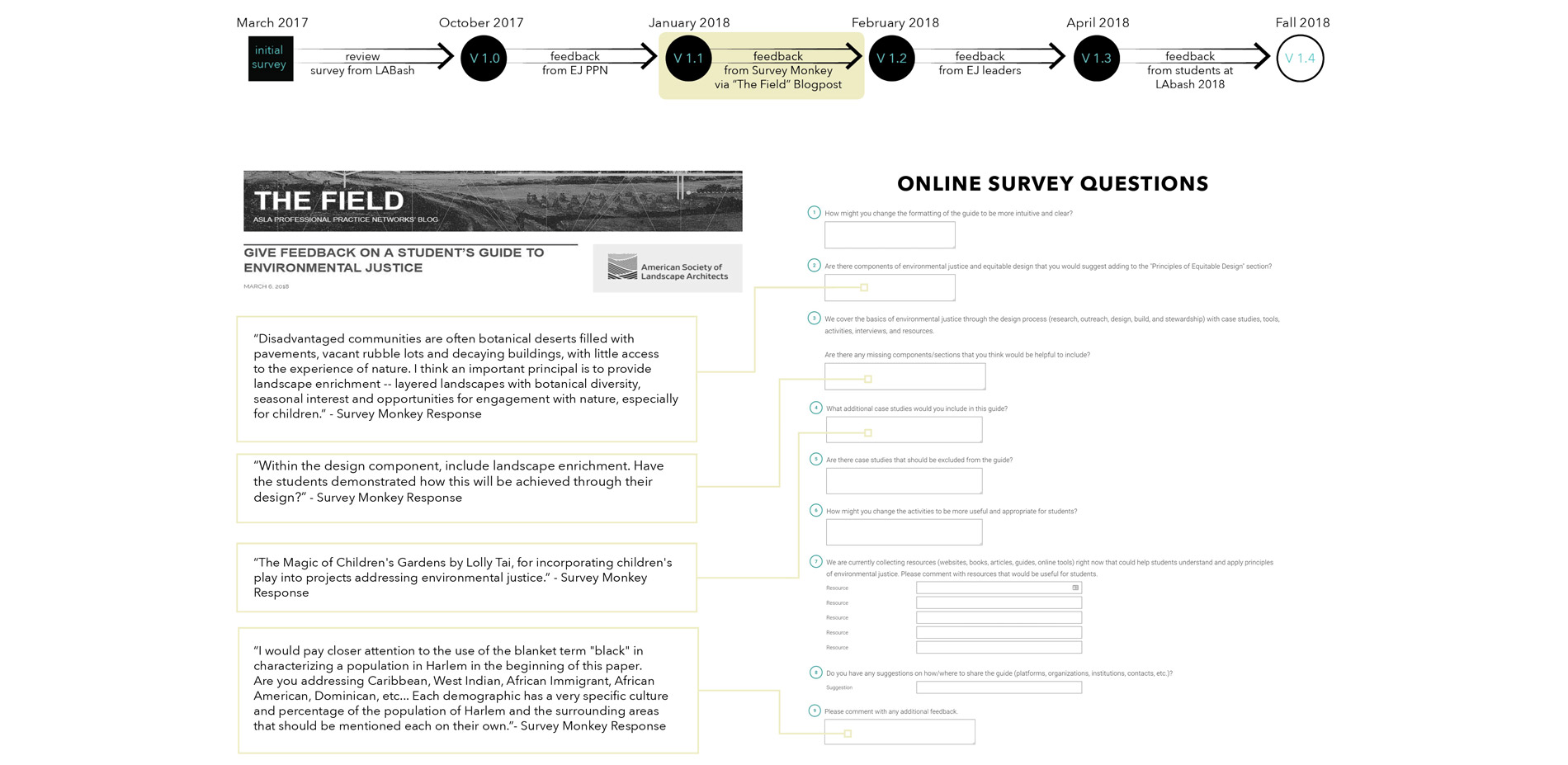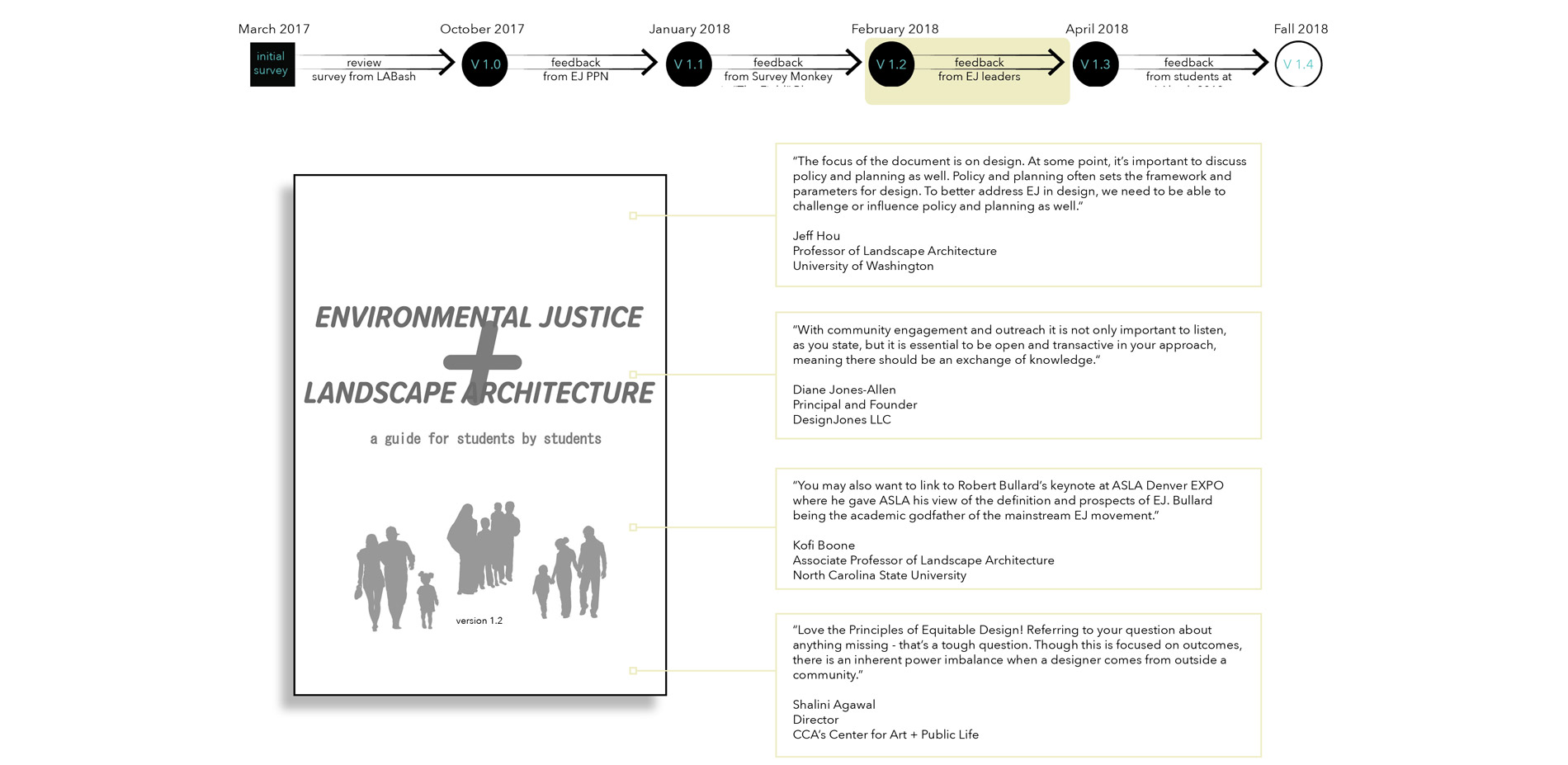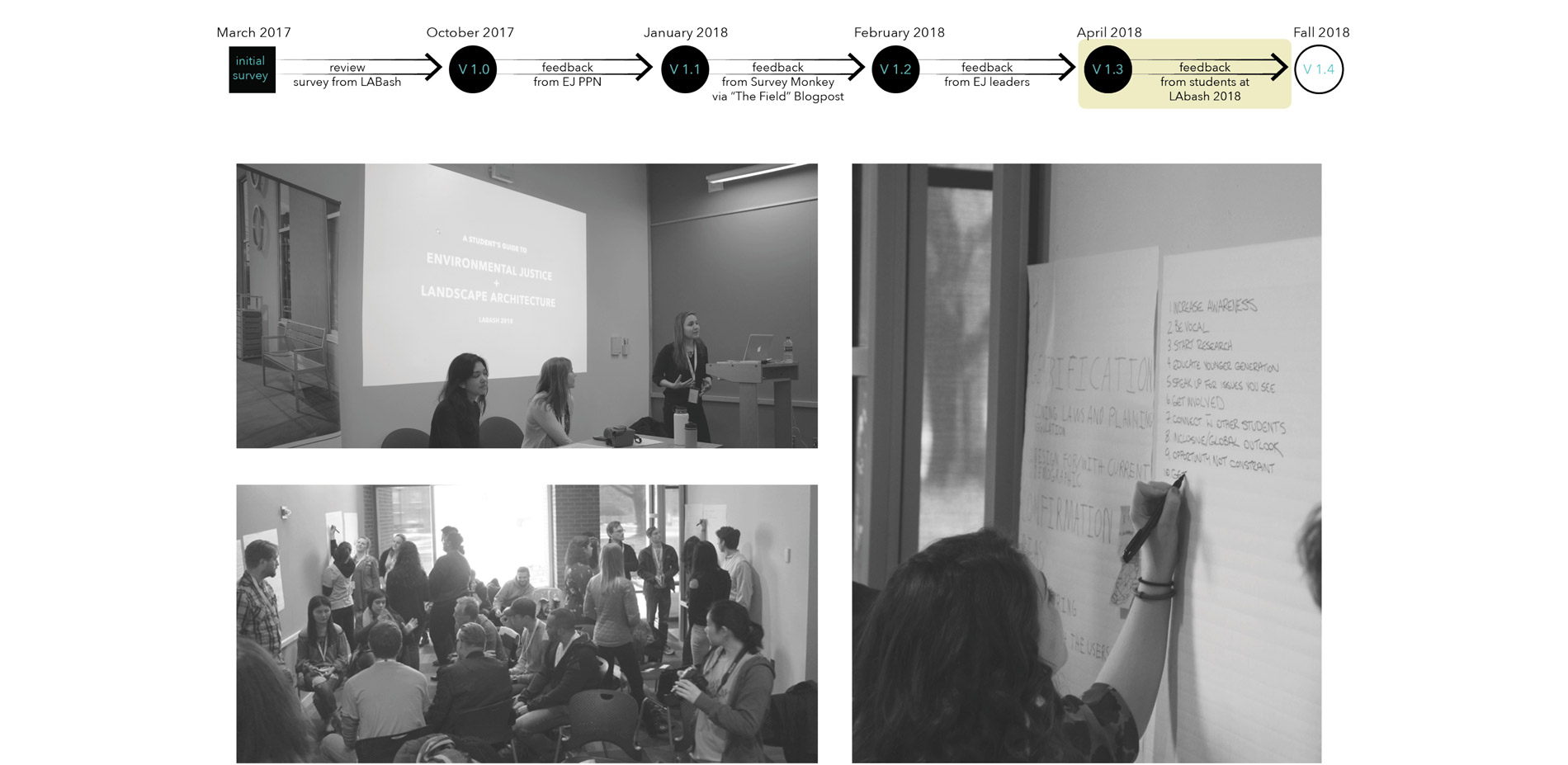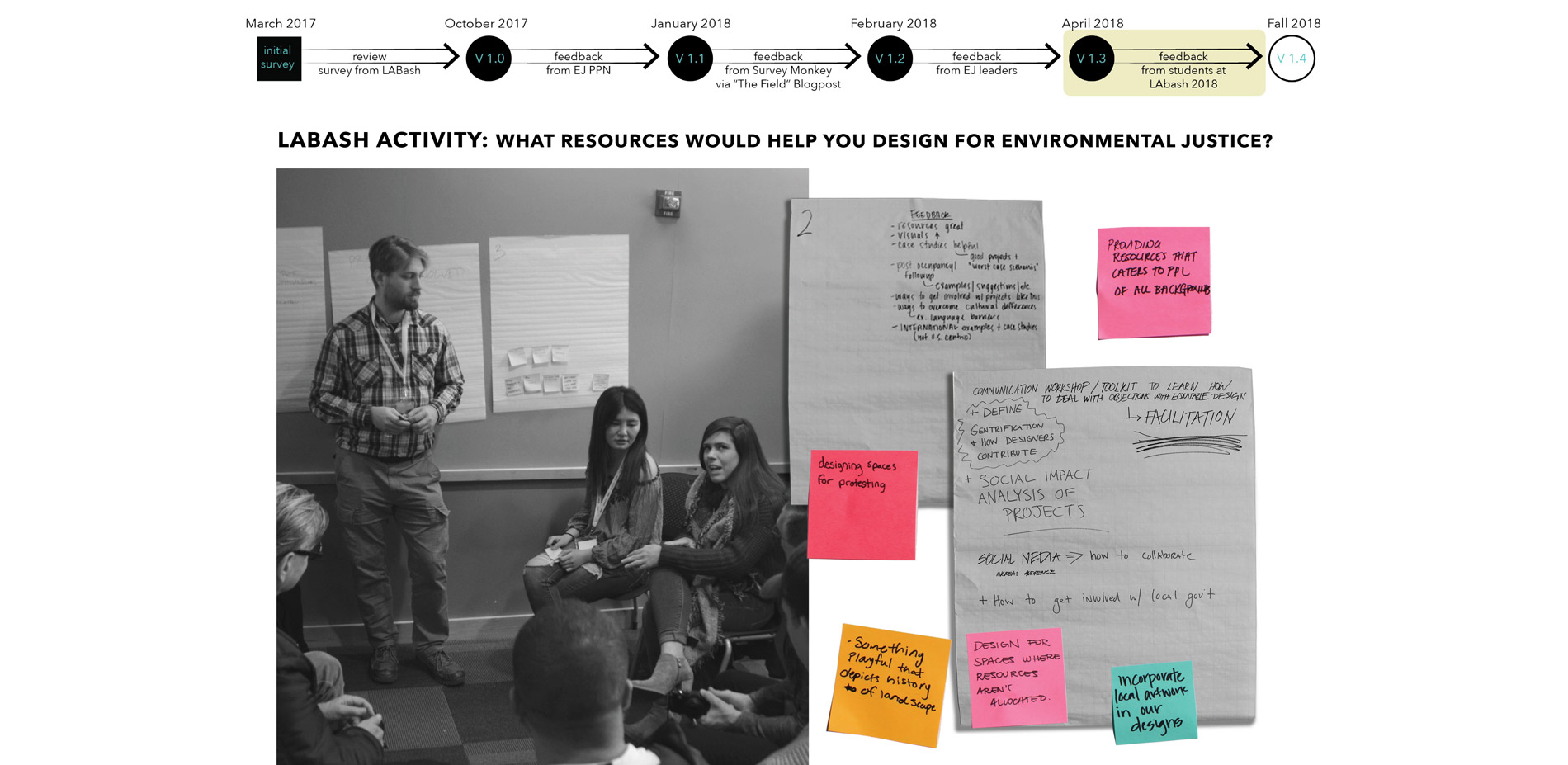A Student's Guide to Environmental Justice Version 1.3
HONOR AWARD
Communications
Location Not Applicable | Team: Kari Spiegelhalter, Student ASLA; Patricia Noto, Student ASLA; Tess Ruswick, Student ASLA | Faculty Advisors: Joshua F. Cerra, ASLA
Cornell University and Rhode Island School of Design
It’s an extremely important and timely subject. And was created by a very thorough process that included literature, interviews with individuals, and an examination of case studies which were synthesized and presented in a very accessible, organized way.
- 2018 Awards Jury
PROJECT STATEMENT
A Student's Guide to Environmental Justice Version 1.3 leads students of landscape architecture through a class studio project while viewing the design process through the lens of environmental justice. It helps prepare students for a career that keeps in mind equity and designing for equitable communities. We lead students through the studio design process, which we define as research, engagement, design, building, and stewardship. Each step in the design process has case studies, interviews, further resources, and activities so students can critically investigate environmental justice issues relating to their design project, integrate it into their studio work, deepen their design, and ultimately make it more equitable. The full version of the guide can be read online here.
PROJECT NARRATIVE
PURPOSE + AUDIENCE
What is environmental justice? How does it relate to social justice, environmental racism, community health, and equitable design? As designers of places and cities, what is our responsibility to work towards greater equity? As three students of landscape architecture, we found these questions weren't always being addressed in our coursework or studio projects in school and are critical for our profession to address. This guide is a response to our own desires to educate ourselves about the intersection of landscape architecture and environmental justice and share what we learned with our peers. It is a starting-off place for students - a compendium of resources, conversations with experts in the field, case studies, and activities students can work though and apply to their studio projects. While we can't provide an exhaustive examination of environmental justice and design, we have filled the document with links to online resources, tools, and suggestions for further reading on the foundations of the environmental justice movement. We see the guide as a launching pad for students to learn more about designing for equitable places and a place for students to begin to address environmental justice concerns in their design work.
MESSAGES + IMPACT
The guide begins by introducing the topic of environmental justice to students, which we define as having been achieved when all people regardless race, color, national origin, gender, or income live in neighborhoods free of health hazards, are able to enjoy equal access to safe, healthy places, and participate meaningfully in the planning of their communities. We also felt it was important to provide a brief history of the environmental justice movement to provide context for students so they can see how the movement evolved from local, grassroots activism over the siting and operation of toxic and waste sites in minority communities.
We wanted to get specific about how this movement relates to our profession, so we spent time in the introduction to the guide examining this intersection of environmental justice and landscape architecture. We see environmental justice as expressed though equitable design of places. As the designers of cities, neighborhoods, and places, landscape architects have an incredible capability to shape human experiences. With this in mind, it is our responsibility to design places that incorporate environmental justice and do not accelerate or create environmental injustices. We can reach this goal by adopting equitable design practices. Equitable design is both a process and an objective. As a process, equitable design taps into the tools of inclusive and participatory design with communities. Equitable design promotes environmental justice as an explicit objective though the creation of healthy places and access to resources.
After introducing environmental justice and equitable design, we take students through each step of the landscape design process and how environmental justice can be integrated at each step. Each section of the design process includes:
- An overview of the step in the design process and related environmental justice concerns.
- Studio workbook pages, which provide an activity for students to complete to integrate within their studio investigations.
- Case studies from built works and student projects.
- An interview with a professional, academic, or recent graduate in the field working towards environmental justice in their communities.
- Resources we used to create the portion of the guide and additional tools for students to use.
METHODOLOGY + DISTRIBUTION
The document was written using the tools of participatory design, and is a living, working document that has already seen several versions and has infinite potential to evolve. This project began in fall of 2016, when we became the ASLA's Environmental Justice Professional Practice Network's student representatives. Our goal was to better connect the important work of professionals, academics, and activists working towards environmental justice with students of landscape architecture. In spring of 2017 we attended LABash at University of Maryland, a conference for students of landscape architecture from around the country. We surveyed students about their understanding of environmental justice, and the results showed that many students didn't know what environmental justice was – they frequently confused it with environmental issues, such as pollution and stewardship of natural resources. Our survey also asked about how they receive information they integrate into their studio projects, and we found that many students use summaries of design techniques and short overviews of topics. To give students a better understanding of environmental justice, we began writing Version 1.0 of A Student's Guide to Environmental Justice. Over the summer, we began compiling resources, researching, writing, and interviewing, and created "Version 1.0" of the guide.
We first received initial feedback and edits for Version 1.0 from fellow members of the Environmental Justice PPN. After updating the document with their suggestions, we then sent out Version 1.2 of the guide to over 15 academics and professionals working at the intersection of landscape architecture and environmental justice for feedback. After another round of edits, we sent the guide to the all the members of the ASLA's Environmental Justice PPN along with an online survey to receive feedback. Though the PPN, we had a phone call design review where we received live feedback from PPN members, and wrote a post for the ASLA's "The Field" blog that linked to an online survey to solicit feedback from an even wider audience.
We released "A Student's Guide to Environmental Justice" Version 1.3 at LAbash 2018 through an interactive, participatory presentation with over 40 students of landscape architecture from around the country. We first presented an overview of the guide, and then gathered students into small groups and asked them to discuss critical questions about landscape architecture and environmental justice. Near the end of the presentation, we asked them what they would like to see in a guide about environmental justice. After the presentation, we emailed each student the guide and a link to a survey monkey where they could give feedback on the guide. In addition to the presentation and distribution at the LAbash conference, we also had the guide on display and a sign-up sheet to receive it digitally and complete a survey to give feedback at the Rising Urbanists Conference put on by the student chapter of the CUNY-ASLA and the Design Futures Public Interest Design Student Leadership Forum at Washington University in Saint Louis.
Our next step is to integrate all this feedback from students and create Version 1.4 to be released to students digitally via their departments in Fall of 2018 so they can integrate this knowledge into their studio projects. As this is a working, participatory design document, we hope that future Environmental Justice PPN student representatives continue to evolve the document and receive feedback on its effectiveness and worth. We believe our profession has great potential to address environmental justice. In order to do so, we need to be well versed in the history of these topics and to have robust conversations about these difficult topics as a profession. In many ways, we hope this guide will spark conversation among students and professionals so that we will be better equipped to conduct more equitable design processes and spaces.
